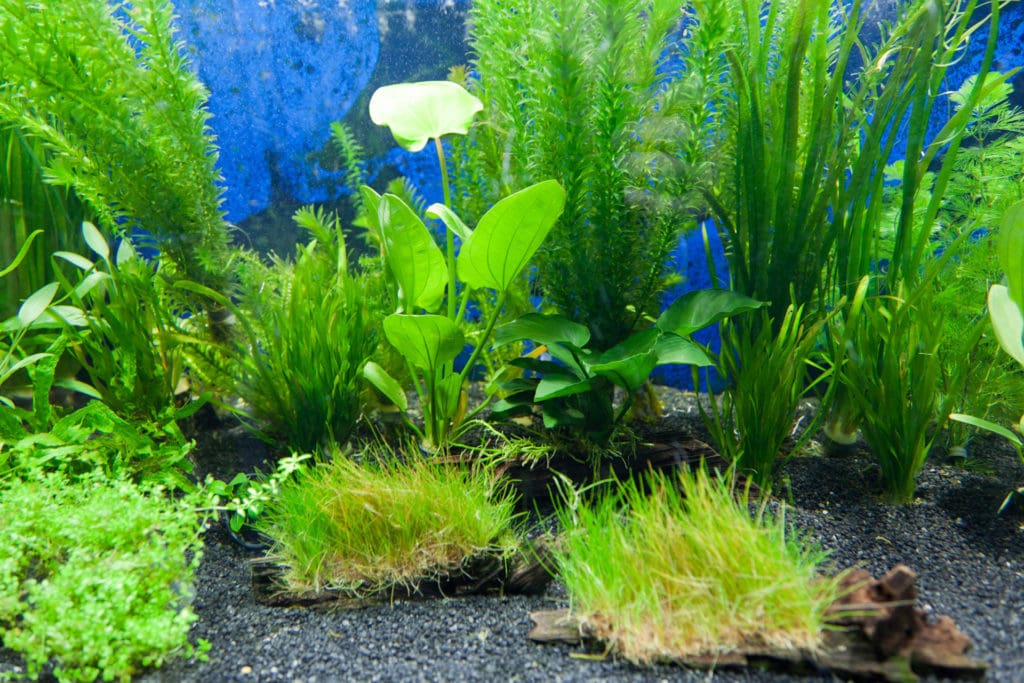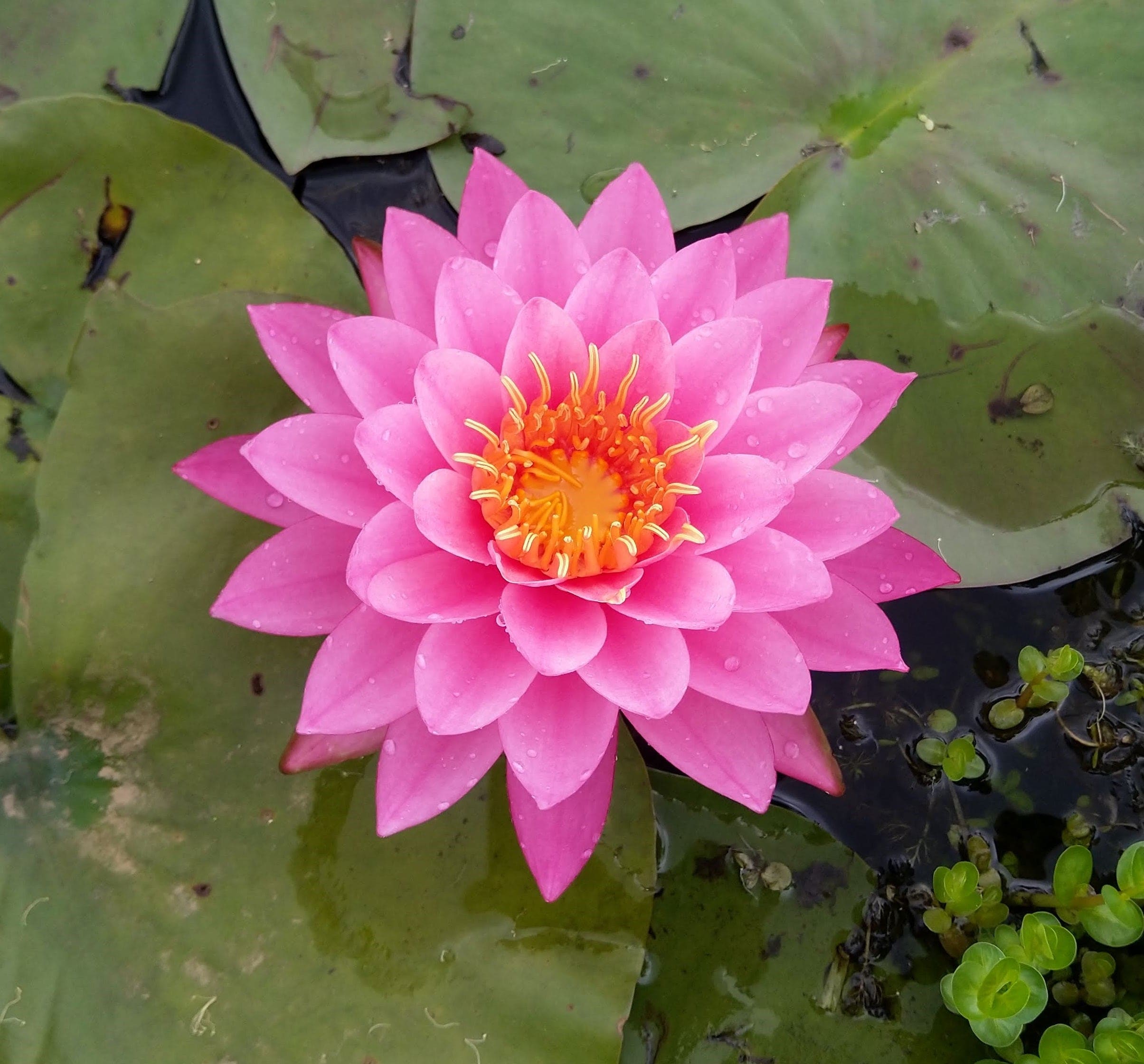In this scholarly discourse, you are invited to explore the fascinating realm of hydrophytes, commonly known as water plants. Unveiling the mystery shrouded upon these gardening jewels, the text meticulously elaborates on their characteristics, biodiversity, significance in the aquatic ecosystem, and the myriad of ways they transform underwater landscapes. Rigorous yet accessible, this article promises to deepen your understanding and appreciation of these compelling denizens of the plant kingdom that inhabit distinct and diverse aquatic habitats. Open the door into this intriguing world and uncover the essence of the aquatic plant.

Defining Aquatic Plants
General Definition
Aquatic plants, known as hydrophytes or macrophytes, are plants that have adapted to living in aquatic environments. They have the major requisite to survive in water or subsoil water permanently or temporarily. These plants are a natural constituent of the water body and they play critical roles in sustaining the health of the ecosystem.
Their Distinct Characteristics
Aquatic plants are distinguished by their ability to thrive in environments with varied water depths. Their unique features include thin or no cuticle (to allow water and gas absorption), air spaces (to assist in buoyancy and respiration), and flexible stems (to endure water currents). Some aquatic plants have roots anchored to the muddy bottom while others float freely on the water surface.
Why They Are Called ‘Water Plants’
These plants are often called ‘water plants’ because their life cycle is completed on, under, or near the water. From germination to reproduction, their entire life is spent within their aquatic habitat. It’s their inherent capacity to survive and thrive in aquatic conditions that affords them the name ‘water plants’.
Categories of Aquatic Plants
Emergent Aquatic Plants
Emergent aquatic plants, also known as marginal plants, are usually rooted under water in the substrate, but the majority of their biomass is above the water surface. Examples of these are cattails, sedges, and rushes. They typically grow along the margins of water bodies where water meets land.
Submerged Aquatic Plants
Submerged aquatic plants, often referred to as oxygenating plants, spend their whole lives under water. Their roots are commonly anchored in the substrate, but some float freely. Submerged plants are critical for maintaining healthy aquatic environments since they produce oxygen. Examples include seagrass, pondweed, and Brazilian waterweed.
Floating Aquatic Plants
Floating aquatic plants are well-adapted to live on the water surface without needing to anchor in soil. They get the required nutrients through their roots that dangle down in the water. They are categorized into free-floating and rooted-floating plants. Duckweed, water hyacinths, and Amazon frogbit are examples of floating plants.

Habitat and Distribution of Aquatic Plants
Common Locations Worldwide
Aquatic plants are distributed worldwide, from tropical rainforests to arctic regions. They can be found in various aquatic environments such as ponds, lakes, streams, rivers, marshes, and oceans. However, their abundance and diversity vary with climatic conditions, water quality, and depth.
Specific Conditions Necessary for Growth
Aquatic plants require specific conditions to grow, including suitable temperature, light, pH, and nutrient availability. Plants in shallow, clear water receive more light and can photosynthesize more than those in deep or murky water. Similarly, various plants have different pH and nutrient preferences, which explains the diverse range of plants in different aquatic habitats.
Adaptations of Aquatic Plants
Adaptations for Submerged Life
Submerged aquatic plants have evolved numerous adaptations to survive underwater. They often have less rigid stems to tolerate water currents, thin or no cuticle to absorb more nutrients from the water, and finely divided leaves to permit better water movement. They also have air spaces that facilitate buoyancy and oxygen circulation.
Adaptations for Floating Life
Floating plants have adaptations such as a flat body structure and air storages in their leaf and stem tissues for buoyancy. Their stomata are present on the upper surface of their leaves to enable gas exchange. Their roots dangle in the water and are feathery or lack a root cap to absorb nutrients efficiently.
Adaptations for Emergent Life
Emergent plants have sturdy stems to withstand wave action and a waxy layer on their leaves to prevent water loss. Their roots are often extensive and divided into aerenchyma to facilitate oxygen circulation from the leaves to the roots, allowing these plants to thrive in waterlogged or inundated soils.

Life Cycle of Aquatic Plants
Growth
The growth process of most aquatic plants typically involves the germination of seeds under wet or submerged conditions. Once mature, the plant continues to grow by forming new stems, leaves, and roots. These processes are largely influenced by factors such as light, temperature, water nutrients, and depth.
Reproduction
Aquatic plants reproduce through various strategies like spores, vegetative propagation, and seeds. Some plants, such as water hyacinths, reproduce rapidly by producing daughter plants that are clones of the parent. Others, like water lilies, produce beautiful flowers that pollinate and create seeds.
Winter Dormancy
During the cold winter months, many aquatic plants enter a state of dormancy. Some shed their leaves and stop growing, while others may die back completely, only to regrow from seeds or roots when favorable conditions return in spring.
Importance of Aquatic Plants
Role in Ecosystem
Aquatic plants play a crucial role in their ecosystems as primary producers. They contribute to the structural complexity of the ecosystem, offering habitats for other organisms like fish, invertebrates, and birds. By replacing carbon dioxide with oxygen through photosynthesis, they also help to regulate the atmosphere.
Relationship with Wildlife
Aquatic plants are critical for supporting wildlife, providing both habitat and food. Numerous species of birds, mammals, and invertebrates rely on them for nourishment, nesting grounds, or shelter from predators.
Importance for Water Quality
Aquatic plants improve water quality by absorbing nutrients and contaminants. Through the process of uptake, these plants prevent the outbreak of harmful algae blooms that can ruin water bodies. They also assist in sediment stabilization and water clarity.

Human Uses for Aquatic Plants
Food Source
Aquatic plants serve as a source of food for humans. Plants like watercress, lotus, and water chestnuts are common in different cuisines worldwide. Dried seaweeds are a staple in many Asian dishes.
Medicinal Uses
Many aquatic plants are known for their medicinal properties and are used in various traditional therapies. For instance, lotus has been used in Ayurvedic medicine for its healing properties. Furthermore, modern research is exploring the potential use of aquatic plants in treating diseases.
Cultural Significance
Aquatic plants hold cultural significance in many societies. Water lilies and lotus flowers are often associated with purity and are commonly depicted in art and religion. Some plants, such as papyrus, have historical importance, having been used to make paper in ancient times.
Threats to Aquatic Plants
Water Pollution
Water pollution is a significant threat to these plants, primarily from nutrient and chemical runoff which can lead to eutrophication and the decline of plant species. Furthermore, contaminants like heavy metals can accumulate in plants, negatively affecting their growth and reproduction.
Climate Change
Climate change poses significant risks to aquatic plants due to altered water temperatures, increased carbon dioxide levels, and sea-level rise. These changes can shift plant distribution, promote invasive species, and lead to loss of biodiversity.
Invasive Species
Invasive plants species can pose a threat to native aquatic plants by outcompeting them for resources, altering habitats, and spreading disease. They can rapidly colonize water bodies and lead to a decline in native plant populations.

Conservation of Aquatic Plants
Current Conservation Efforts
Various conservation efforts focus on protecting aquatic plants by improving water quality, controlling invasive species, and preserving aquatic habitats. Local, national, and international organizations have implemented programs to monitor and conserve key plant populations and their habitats.
Ways to Help
Individuals can contribute to conserving aquatic plants by lowering their consumption of water, decreasing chemical use that can pollute waterways, volunteering in restoration projects, and spreading awareness about the importance of these plants.
Restoration Methods
Restoration methods often involve replanting native species, removing invasive species, and improving water quality. In areas with severe destruction, bioengineering techniques like constructing wetlands or stabilizing banks with plants can be effective.
Commonly Known Aquatic Plants
Water Lilies
Water lilies are one of the most recognized aquatic plants, known for their attractive floating flowers that come in a variety of colors. They are found throughout the world in still, fresh-water habitats. In addition to their aesthetic appeal, they provide shelter for fish and produce nourishing seeds for birds.
Seaweeds
Seaweeds are complex algae that grow in the sea. They are ecologically critical, providing food and shelter for a diverse array of marine life. They serve vital purposes for humans too, being used in food, medicine, and numerous industrial products.
Cattails
Cattails are common emergent aquatic plants that are found worldwide in wetland environments. Their narrow, upright leaves and distinctive brown flower spikes make them easily recognizable. They provide habitat for wildlife, and their roots and shoots have been used for food and manufacturing products by different cultures.